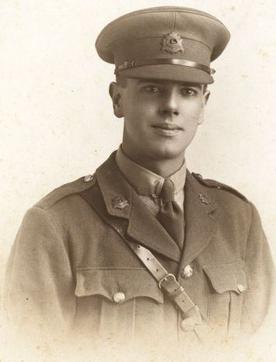Frederick William Hedges facts for kids
Quick facts for kids
Frederick William Hedges
|
|
|---|---|
 |
|
| Born | 6 June 1896 Umballa, British India |
| Died | 29 May 1954 (aged 57) Harrogate, West Riding of Yorkshire |
| Allegiance | |
| Service/ |
|
| Years of service | 1914–1920 |
| Rank | Captain |
| Unit | London Regiment Bedfordshire Regiment Northamptonshire Regiment (attached) Home Guard |
| Battles/wars | First World War
|
| Awards | |
Captain Frederick William Hedges (born June 6, 1896, died May 29, 1954) was a very brave British soldier. He received the Victoria Cross, which is the highest award for courage in battle. This special medal is given to soldiers from Britain and its Commonwealth countries.
He fought in the First World War with the Bedfordshire Regiment. He earned his Victoria Cross on October 24, 1918, during a battle called the Battle of the Selle.
Contents
Early Life and School
Frederick Hedges was born on June 6, 1896, in Umballa, India. He was one of nine children. His father was a bandmaster in the British Army.
By 1901, his family lived in Hounslow, England. Frederick went to Grove Road Boys' School. He also attended Isleworth County School.
Serving in World War I
When the First World War began, Frederick Hedges joined the British Army. He became a rifleman in the London Regiment. In November 1914, his unit went to France. They fought on the Western Front.
He was part of the First Battle of Ypres. In January 1915, he got frostbite and went back to England for treatment. After a few months, he was well enough to return to his regiment.
Becoming an Officer
In July 1915, Hedges became an officer in the Bedfordshire Regiment. He trained at Felixstowe. For several months, he taught soldiers how to use muskets in England.
In September 1916, he returned to the Western Front. He fought in the Battle of the Ancre in November 1916. The next year, he was in the Battle of Arras. During this battle, he was wounded in the hand. He received medical care in France and then in England.
Heroic Actions
Hedges returned to the front lines in September 1918. He had briefly taught machinegun skills after recovering. He was promoted to lieutenant. He joined the 6th Battalion of the The Northamptonshire Regiment.
On October 24, 1918, his battalion was fighting in the Battle of the Selle. Lieutenant Hedges led his company near Hecq village. He and another soldier bravely captured two enemy machinegun posts. These posts were stopping the British advance.
A few days later, he was wounded in the head and shoulder. This happened during a fight in the Mormal Forest. He was sent back to England for treatment on November 8, 1918.
Receiving the Victoria Cross
For his brave actions on October 24, he was awarded the Victoria Cross (VC). The VC is the highest award for bravery in the British Empire. It was first created in 1856.
After he recovered, Frederick Hedges received his Victoria Cross. The ceremony took place at Buckingham Palace on May 15, 1919. The next month, he was put in charge of a prisoner of war camp. He married his fiancée, Mollie Kenworthy, in Hounslow. He left the British Army later that year.
Life After the War
After leaving the army, Hedges worked for the Cornhill Insurance Company. He helped create a memorial for students from his old school who died in the war. He was also involved with the British Legion.
In 1924, his first son, John Grosvenor Hedges, was born. During the Second World War, both Frederick and his son John served in the Home Guard. Sadly, in 1941, John died in a drowning accident.
After the Second World War, Hedges and his wife moved to Harrogate. He managed Cornhill's office there. He later retired early from his work. His remains were cremated.
Victoria Cross Medals
After Frederick Hedges passed away, his medals were loaned to the Leeds City Museum. Besides the Victoria Cross, he also received other medals. These included the 1914 Star, the Victory Medal, the British War Medal, and two Coronation Medals (1937 and 1953).
His medals are now cared for by the Bedfordshire and Hertfordshire Regiment. They are displayed at the gallery in Wardown Park Museum in Luton, Bedfordshire.

